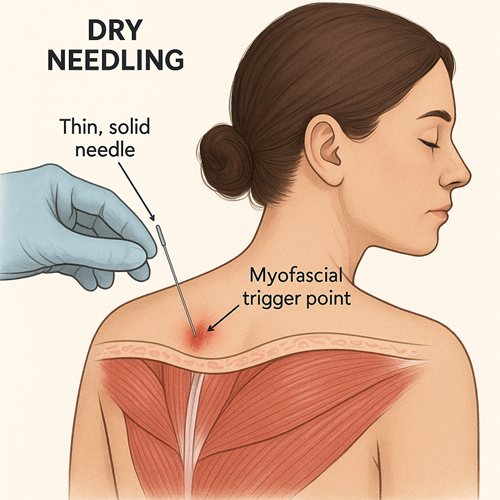What is Dry Needling?
Dry needling is a therapeutic technique used by trained healthcare professionals—typically physical therapists, chiropractors, or some medical doctors—to treat muscle pain and dysfunction. It involves inserting thin, solid (dry) needles into specific trigger points or tight bands of muscle to relieve pain, improve range of motion, and promote healing.
How It Works:
The needle is inserted directly into a myofascial trigger point—a hyperirritable spot in the muscle that can cause pain locally or refer it elsewhere.
The goal is to cause a twitch response in the muscle, which helps reset muscle tone, reduce tension, and improve blood flow.
Why It’s Called “Dry”:
Unlike injections (which use hollow needles to deliver medication), dry needling uses no medication—just the mechanical action of the needle.
What It’s Commonly Used For:
Muscle knots and tightness
Chronic pain (like neck, back, or shoulder pain)
Sports injuries
Tension headaches or migraines
Sciatica or nerve-related muscular issues
Is It the Same as Acupuncture?
No, although both use thin needles, they are based on different philosophies:
Dry needling is rooted in modern Western medicine and focuses on anatomy and neuromuscular function.
Acupuncture is a component of Traditional Chinese Medicine (TCM) and is based on balancing energy (Qi) in meridians.
If you’re considering dry needling, it’s best done by a certified practitioner trained in the technique, especially if you’re dealing with complex or chronic pain. Reach out today to Dr. Beth Schoon for a consultation today.

